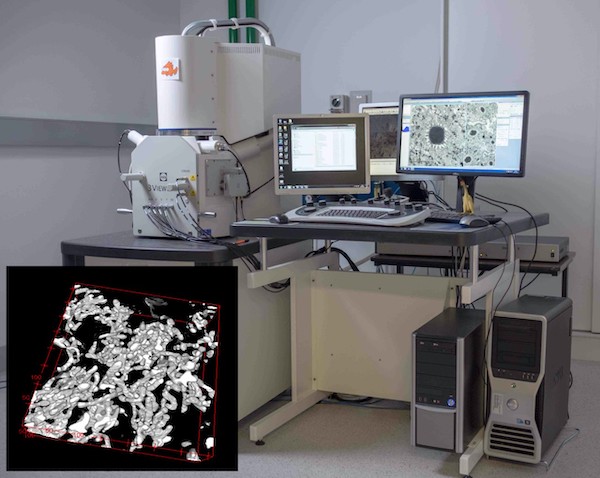
After almost six months of being connected to the Characterisation Virtual Laboratory (CVL), RCC-managed high-performance computer Wiener hit an important milestone this month when it was used for the one-thousandth time via the imaging platform.
Dr Rubbiya Ali, Data Informatics Manager at UQ’s Centre for Microscopy and Microanalysis, was CVL@Wiener’s one-thousandth user when she ran it in an image processing workshop for CMM staff.
CVL is freely available nationwide to researchers and integrates high-value Australian imaging instruments with specialised computing capabilities to offer a common remote desktop environment.
The desktop presentation platform is hosted in the national research cloud to support data analysis, data management and collaboration, and enables researchers to leverage a local system for imaging workloads.
In collaboration with Monash University, RCC is integrating its work into the CVL so users can launch a desktop, including on Wiener (known informally as CVL@Wiener), via the portal and access more than 300 scientific imaging tools.
Having an HPC connected to the CVL gives researchers access to the software they need on a high-power compute platform that is near their data storage. This enables the CVL to be available via high-bandwidth networks.
Rubbiya uses CVL@Wiener in the series of image processing training sessions for electron microscopy she runs monthly for CMM staff.
With the help of Dr Kathryn Hall, Training and Community Engagement Manager at the UQ-based National Imaging Facility, she has delivered three of these sessions so far this year, held online via Zoom due to the COVID-19 pandemic, and trained more than 50 researchers.
The training program’s aim is to first train-the-trainers (CMM staff) who then can help CMM’s clients (UQ and non-UQ research scientists) process images and gain more insights into their samples.
After a few more training sessions specifically for CMM staff, the plan is to open the program UQ-wide to help more research groups and researchers.
Rubbiya said having access to CVL@Wiener as a web portal has made it a lot easier to deliver training online, with no software installation required, and enabled more participants to attend sessions.
“Even in normal circumstances, getting the right hardware for a big number of participants gets really challenging, and finding the seminar rooms (considering the social distancing rules) and high-performance computing machines (suitable for image processing) for so many people was kind of impossible,” she said.
“The CVL was delivered just in time and helped us to overcome the challenges. That’s the beauty of the CVL — that it’s available and accessible from everywhere, even without a VPN. I think it’s the best platform for [imaging] training purposes, and I would highly recommend it to all trainers.”
An average of 15 CVL@Wiener desktops were used in each of the three CMM training sessions. Each desktop used eight cores, up to 128 GB of memory and one Nvidia Tesla T4 graphics card.
To get to grips with Wiener, Rubbiya attended one of RCC’s monthly ‘Introduction to HPC’ workshops.
Although she didn’t undertake CVL-specific training, she contacted the CVL team, which includes RCC staff Dr Edan Scriven and Jake Carroll, and Irek Porebski from UQ’s Queensland Brain Institute, for help with any issues.
“I highly appreciate the whole CVL team, who always welcome any queries and try to provide the best solution to everyone,” she said.
“I would also like to specially thank CMM Director Professor Roger Wepf and RCC Director Professor David Abramson for their strong commitment to meet UQ researchers’ computing needs and working really hard to provide continuity of service during this pandemic situation. ”
To expand CVL@Wiener and provide greater capacity for users, RCC has recently added six new nodes to the system. Each node features two 16-core CPUs, 512 GBs of memory and four NVidia Tesla T4 graphics cards.
The CVL is funded by the Australian Research Data Commons (ARDC) and operated by MASSIVE (Multi-Modal Australian Sciences Imaging and Visualisation Environment) in partnership with Monash University, Microscopy Australia, ANSTO, NIF, and the universities of Sydney. Queensland, Western Australia and Wollongong.
For CVL enquiries, please contact the MASSIVE helpdesk.



